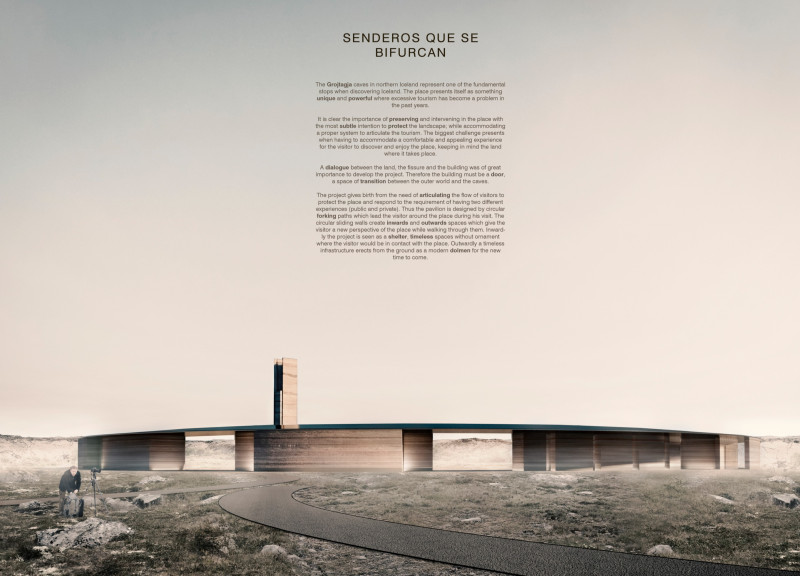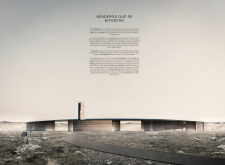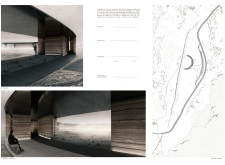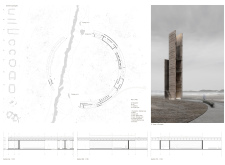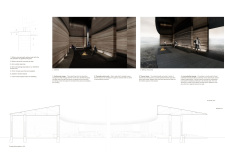5 key facts about this project
The Grojtagja caves in northern Iceland are a captivating feature of the landscape, combining geological significance with natural beauty. The design of the visitor pavilion aims to enhance the experience of exploring this unique site while managing the challenges posed by growing tourism. By creating a space that acts as a connection between the open landscape and the caves, the design encourages exploration and interaction with the environment.
Design Concept
The design focuses on establishing a conversation between the building and the natural fissures that define the area. Circular paths guide visitors through the site, leading them to different viewpoints of the caves and the surrounding landscape. This layout offers visitors both public and private experiences, allowing for varying levels of engagement while exploring the unique geological features.
Functionality and Structure
Inside the pavilion, the atmosphere is calm and simple. The design avoids unnecessary details, letting visitors connect directly with the surroundings. The overall shape of the building resembles a modern dolmen, providing a structure that feels at home in its natural environment. This form invites contemplation and a deeper appreciation of the caves and their history.
Materials and Sustainability
Sustainability is a key focus. The design uses rammed earth for the outer walls, which helps provide thermal regulation through geothermal pipes that facilitate efficient heating and cooling. A concrete top belt supported by vertical steel ties gives the building strength, suitable for the harsh Icelandic weather. Mineral wool insulation enhances energy performance, while timber trusses in the roof structure support both function and aesthetic appeal. The copper sheet roof cladding connects with local traditions and complements the overall design.
Attention to Detail
The circular pathways encourage visitors to take their time. As they walk through the pavilion, they experience a journey that allows them to connect with the geological features of the Grojtagja caves. Every design element contributes to this immersive experience, transforming an ordinary visit into an opportunity for reflection and appreciation of nature and history.


